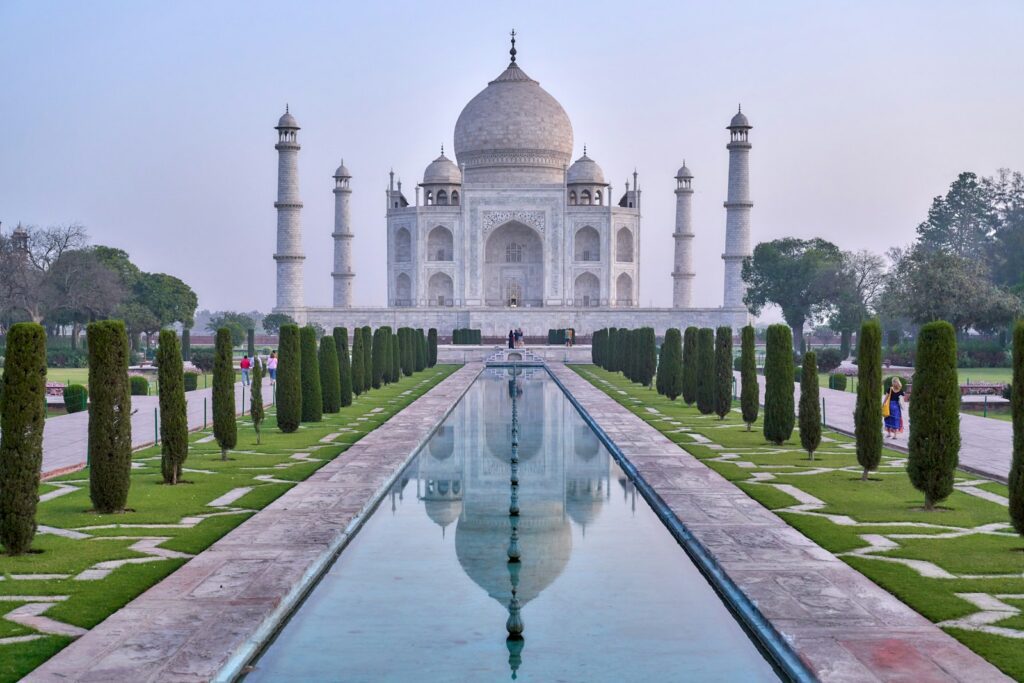India | Travel Guide
Planning a Trip to India
Planning a trip to India requires careful consideration of its vast size, diverse regions, and rich cultural experiences. First, decide on the regions you want to explore, such as the historical landmarks of the Golden Triangle (Delhi, Agra, Jaipur), the serene backwaters of Kerala, or the spiritual cities of Varanasi and Rishikesh. Consider the time of year, as India’s climate varies widely, with winter (October to March) being ideal for most destinations.
Ensure you have the necessary visa, typically available via the e-Visa system. Book transportation in advance, particularly trains or domestic flights, as distances can be long. India offers a variety of accommodation options, from luxury hotels to budget guesthouses, so plan according to your comfort and budget. Finally, research health and safety precautions, such as vaccinations, and be mindful of local customs and etiquette to ensure a smooth and enriching travel experience.
Exploring India
India, a land of rich history, diverse cultures, and breathtaking landscapes, is a captivating destination for travellers. With a population of over 1.4 billion, it is the world’s most populous country, offering a vast array of experiences, from the snow-capped peaks of the Himalayas in the north to the tropical beaches of the south.
Visitors can explore iconic landmarks such as the Taj Mahal, a UNESCO World Heritage Site and one of the New Seven Wonders of the World, or delve into the bustling markets and vibrant street life of cities like Delhi, Mumbai, and Kolkata. Spiritual seekers often visit Varanasi, one of the world’s oldest cities, or explore the peaceful ashrams of Rishikesh.
India is home to diverse wildlife, including tigers, elephants, and rhinos, with several national parks offering safaris. The cuisine varies by region, from the rich curries of Punjab to the spicy delicacies of Kerala, providing a sensory journey for food lovers.
Things to Do in India
Taj Mahal, Agra

The Taj Mahal, located in Agra, India, is one of the most iconic and beautiful buildings in the world. Built in the 17th century by Mughal Emperor Shah Jahan, it serves as a mausoleum for his beloved wife, Mumtaz Mahal. Often described as a symbol of eternal love, the Taj Mahal is renowned for its stunning white marble architecture, intricate inlay work, and perfectly symmetrical design.
A UNESCO World Heritage Site, the Taj Mahal attracts millions of visitors each year. Its grandeur is heightened by the reflection in the long pool that runs through the formal gardens leading up to the main structure. At sunrise and sunset, the building appears to change colours, adding to its magical allure.
This masterpiece of Mughal architecture, combining elements of Islamic, Persian, and Indian styles, is a must-see for anyone visiting India.
Jaipur, Rajasthan
- Amber Fort, also known as Amer Fort, is one of the most iconic and stunning forts in India, located about 11 kilometres from Jaipur. Perched on a hill overlooking Maota Lake, this majestic fortress is a fine example of Rajput architecture, with grand courtyards, intricate palaces, and beautifully designed temples. Built in the late 16th century by Raja Man Singh I, it served as the residence of the Kachwaha Rajput rulers before they moved to Jaipur.
Key Highlights:
- Sheesh Mahal (Hall of Mirrors): Adorned with intricate mirror work, this hall dazzles as even a single light causes the whole room to sparkle.
- Ganesh Pol: A beautifully painted gateway leading to royal chambers, with vibrant frescoes.
- Jaleb Chowk: A large courtyard once used for military parades.
- Diwan-i-Aam (Hall of Public Audience): Where the king addressed public matters.
- Sukh Niwas: A royal residence with a unique water-cooling system.

Darjeeling, West Bengal

Darjeeling, located in the foothills of the eastern Himalayas in West Bengal, is a picturesque hill station known for its stunning natural beauty, tea plantations, and rich colonial heritage. Often referred to as the “Queen of the Hills,” Darjeeling offers breathtaking views of the surrounding mountains, including the majestic Kanchenjunga, the third-highest peak in the world. Its cool climate, lush greenery, and charming atmosphere make it a popular destination for both domestic and international tourists.
A UNESCO World Heritage Site, the Darjeeling Himalayan Railway (DHR), affectionately known as the “Toy Train,” is one of the main highlights of the region. Established in 1881, it was built to facilitate transport between the plains of Bengal and the hill station. The narrow-gauge railway stretches about 88 kilometres from New Jalpaiguri to Darjeeling and is an engineering marvel due to its steep gradients, tight curves, and scenic route through forests, tea gardens, and mountain landscapes.
The train operates on a 2-foot (610 mm) narrow gauge track and ascends through a series of loops and zigzags to negotiate the sharp climbs. The most famous of these is the Batasia Loop, where the train makes a complete spiral, offering panoramic views of the surrounding hills and Kanchenjunga.
Visa Requirements
When visiting India, most travellers will need a visa, which can be obtained through an e-Visa system for tourism, business, or medical purposes. The e-Visa is typically valid for stays of up to 60 days and must be applied for online before arrival. Some nationalities may be eligible for visa exemptions or visas on arrival, but it’s essential to check specific requirements based on your country of residence before travelling.
Getting Around
India offers a wide range of transportation options for travellers, including domestic flights, trains, buses, taxis, and auto-rickshaws. The extensive railway network is an affordable and scenic way to travel between cities, while flights are ideal for covering longer distances quickly. Within cities, taxis and app-based ride services like Uber or Ola are convenient, though auto-rickshaws are common for short trips. For exploring smaller areas, hiring a private car with a driver is often the most comfortable and flexible way to get around.
Must Try Food in India
Indian food is incredibly diverse, reflecting the country’s vast regional variations and cultural influences. Each region boasts its own unique ingredients, flavours, and cooking techniques. North Indian cuisine often features rich, creamy dishes with bold spices, such as butter chicken and naan. In contrast, South Indian food is known for its rice-based dishes like dosa and idli, flavoured with coconut and tamarind.
Western India offers a mix of spicy curries and sweet dishes, while Eastern India is famous for its seafood and sweets like rasgulla. Street food, like pani puri and samosas, is a significant part of Indian culinary culture, offering vibrant, tangy, and spicy flavours. Overall, Indian cuisine is characterised by its use of diverse spices and herbs, making each meal a unique and aromatic experience.
